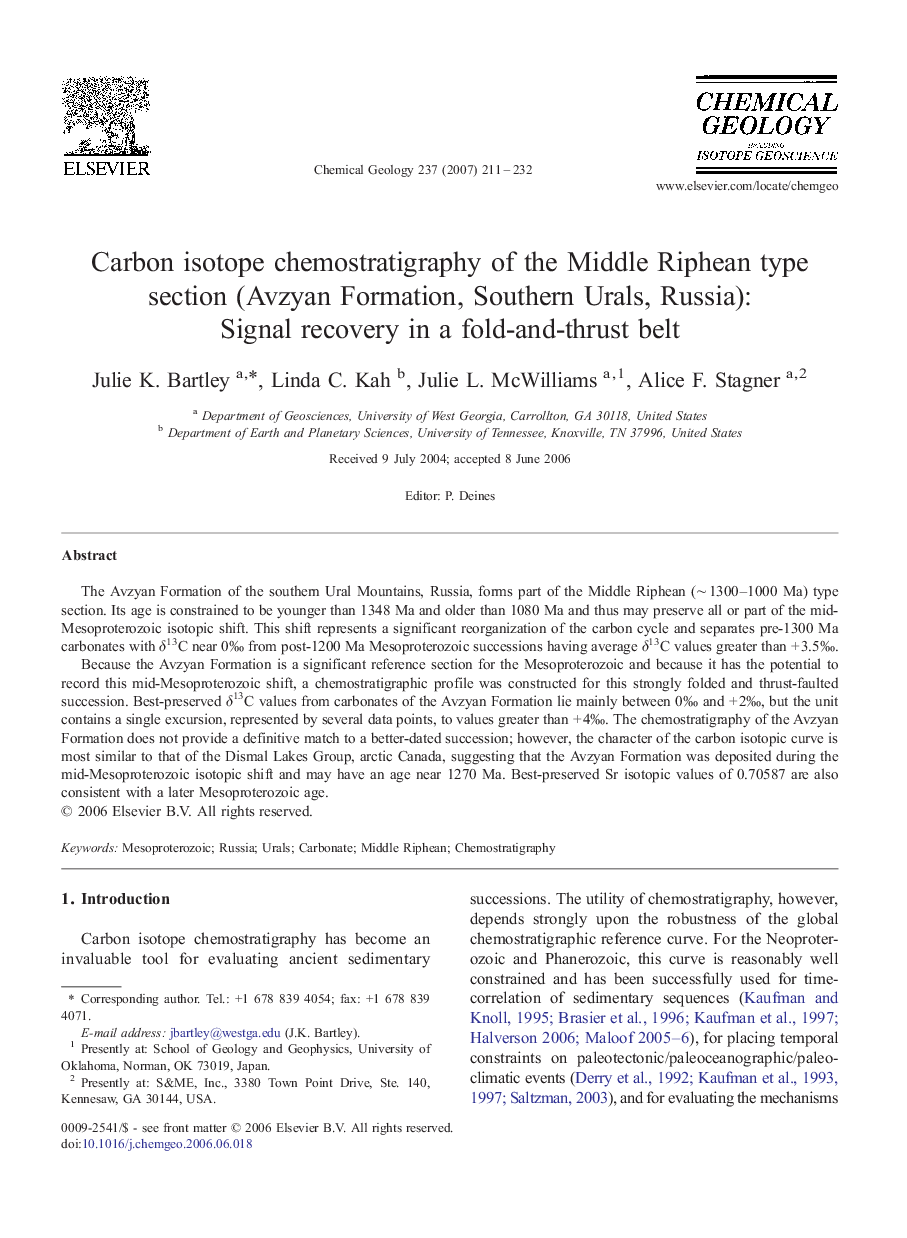| Article ID | Journal | Published Year | Pages | File Type |
|---|---|---|---|---|
| 4701111 | Chemical Geology | 2007 | 22 Pages |
The Avzyan Formation of the southern Ural Mountains, Russia, forms part of the Middle Riphean (∼ 1300–1000 Ma) type section. Its age is constrained to be younger than 1348 Ma and older than 1080 Ma and thus may preserve all or part of the mid-Mesoproterozoic isotopic shift. This shift represents a significant reorganization of the carbon cycle and separates pre-1300 Ma carbonates with δ13C near 0‰ from post-1200 Ma Mesoproterozoic successions having average δ13C values greater than + 3.5‰.Because the Avzyan Formation is a significant reference section for the Mesoproterozoic and because it has the potential to record this mid-Mesoproterozoic shift, a chemostratigraphic profile was constructed for this strongly folded and thrust-faulted succession. Best-preserved δ13C values from carbonates of the Avzyan Formation lie mainly between 0‰ and + 2‰, but the unit contains a single excursion, represented by several data points, to values greater than + 4‰. The chemostratigraphy of the Avzyan Formation does not provide a definitive match to a better-dated succession; however, the character of the carbon isotopic curve is most similar to that of the Dismal Lakes Group, arctic Canada, suggesting that the Avzyan Formation was deposited during the mid-Mesoproterozoic isotopic shift and may have an age near 1270 Ma. Best-preserved Sr isotopic values of 0.70587 are also consistent with a later Mesoproterozoic age.
